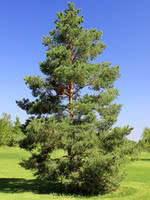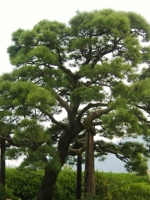Mon-Fri 9am - 5pm Mountain time
Scots Pine (Scotch Pine) vs Japanese Black Pine
Pinus sylvestris
Pinus thunbergii
NOT AVAILABLE THIS SEASON - MIGHT RETURN
Scots Pine is a hardy, adaptable evergreen. This large tree has an oval crown and distinctively orange bark when mature. Scots Pine prefers dry to average moisture levels with very well-drained soil.
It is the most common pine tree used in shelterbelts and windbreaks. Scots Pine is also occasionally used as a Christmas tree variety.
Japanese Black Pine is known for its unique and irregular growth habit, making it a striking landscape addition. It typically does not grow with a central leader. This causes it to form a flat-top, classic bonsai-like shape when mature. When it has a central leader, it will grow with a twisted trunk. Another striking feature is the white apical buds which contrast with the surrounding green needles.
The Japanese Black Pine is an excellent candidate for a bonsai tree and is frequently used by the bonsai community. It is found along the Japanese coast and is salt tolerant.
Scots Pine (Scotch Pine) Quick Facts
Japanese Black Pine Quick Facts
In row spacing: 3 - 4 m (10 - 12 ft)

